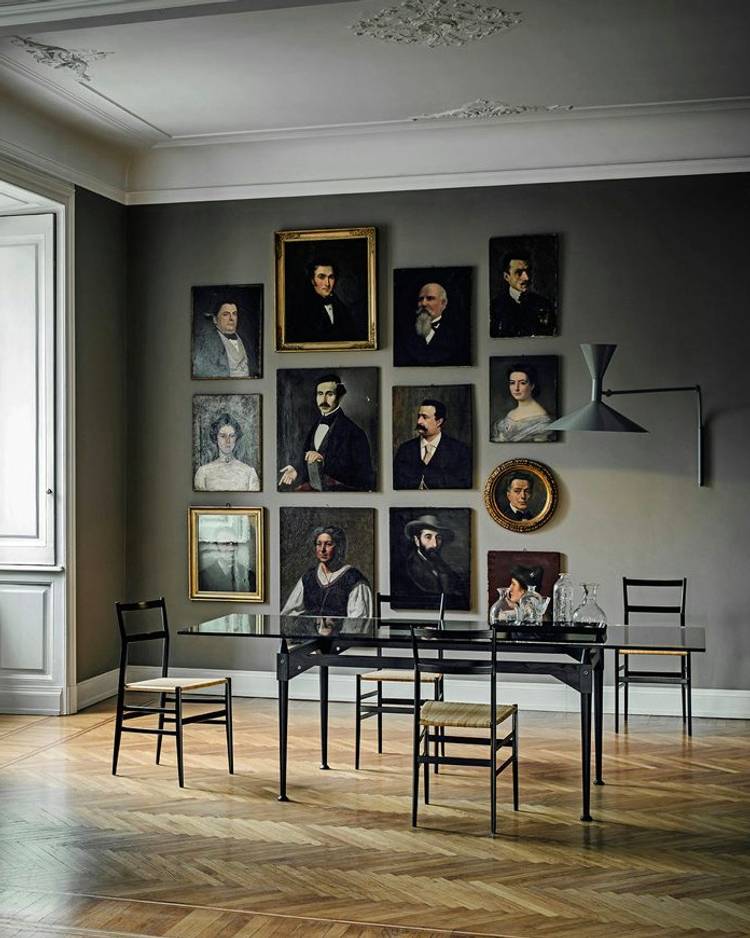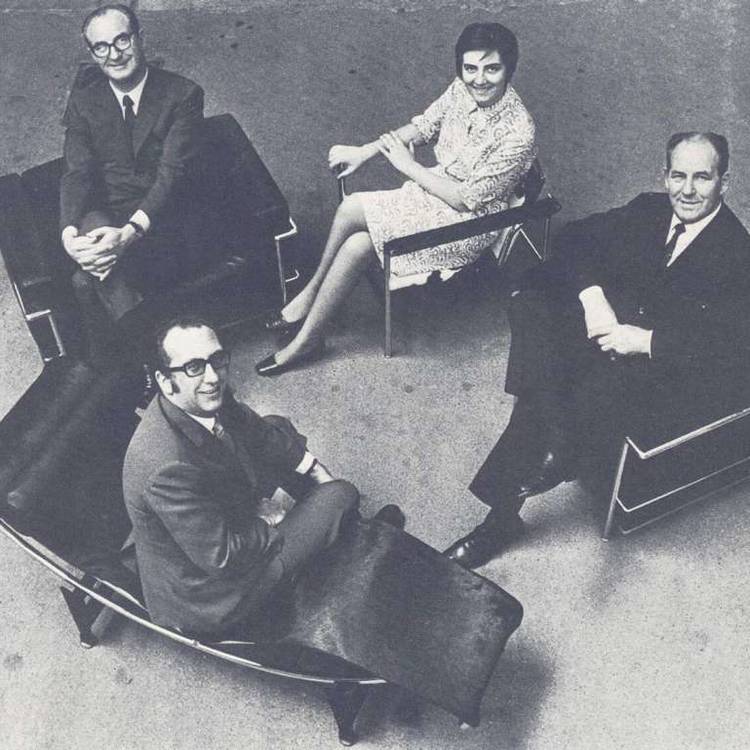Cassina • TL3
Table
Black stained ash wood base, with clear glass top. Designed by Franco Albini, in 1953. Cassina Edition.
The entire Cassina collection can be ordered in our physical stores.
REF. 80975
W.180 x H.75 x D.85cm
Promotion - 20% discount from 25-11-2024 through 02-12-2024
Ready to deliver in 2 a 3 months
Franco Albini designed this table using the strut element that he had already employed in the design of the Veliero and Infinito bookshelves. In this instance, the legs serve as the vertical elements, solid, turned along their entire surface except for the square section onto which the horizontal table-top is installed. The upturned wooden cones that surmount each leg act as spacers between the cross-beams of the frame and the table-top which, given how light it looks, almost seems to hang suspended in mid-air. The connection between the legs and the cross-pieces is highlighted by visible screws. These remind us that the TL3 table can be disassembled.
Cassina’s revisitation of this table, effected in collaboration with the Fondazione Albini, is based on archive drawings and includes the use of a glass table-top so that the impeccable carpentry details can be seen more clearly.

Franco Albini, a pivotal figure in the Rationalist Movement, was a luminary across architectural, furniture, industrial, and museum design realms. Graduating from the Politecnico di Milano in 1929, he collaborated with the Ponti and Lancia design studios and was profoundly influenced by his work for the magazine Casabella, marking his transition into and advocacy for the Rationalist Movement in Italy.
Establishing his practice in Milan in 1931, Albini delved into the challenge of workers’ housing, a commitment he sustained post-war through reconstruction projects with Franca Helg from 1952 onwards. His collaboration with Cassina expanded in the 1940s, setting the foundation for his distinctive design style. Honored for his cultural contributions, Albini held memberships in esteemed institutions like INU, CIAM, and MOMA, among others, and received numerous awards, notably the La Rinascente-Compasso d’Oro for the Luisa chair (1955) and the Gran Premio Nazionale La Rinascente-Compasso d’Oro (1958).
Albini's work, spanning from home furnishings to industrial and museum design, embodies logical consistency, purity of expression, and ethical integrity. His architectural and design legacy stands as a cornerstone of Italian architectonic culture, epitomizing a refined and rigorous approach to composition and building that encapsulates a heightened aesthetic sensibility.


Established in 1927 by Cesare and Umberto Cassina in Meda, near Milan, Cassina launched industrial design in Italy in the 1950s, based on a totally innovative approach that marked the transition from artisan production to mass production. Throughout its history, Cassina has been a melting pot of design luminaries. In the 1950s, it forged an iconic partnership with architects like Le Corbusier, Pierre Jeanneret, and Charlotte Perriand, creating legendary pieces such as the LC1 Sling Chair and LC2 Grand Confort sofa. These collaborations revolutionized furniture design, emphasizing form and function in equal measure.

One of Cassina's remarkable aspects is its ability to transcend eras. The brand's reissues of iconic designs retain their original essence while adapting to modern sensibilities, appealing to new generations of design enthusiasts. This blend of heritage and contemporary relevance is exemplified in pieces like the LC4 Chaise Longue, a timeless icon of comfort and style. Cassina's collaborations extend beyond mid-century architects. It has partnered with contemporary designers like Philippe Starck, Patricia Urquiola, and Jaime Hayon, infusing fresh perspectives into its collections. These collaborations merge diverse design philosophies, resulting in eclectic yet harmonious pieces that resonate with a broad audience.
In the present design landscape, Cassina stands as a bastion of innovation and heritage, continuously pushing boundaries while honoring its rich legacy. Its commitment to craftsmanship, combined with a forward-thinking approach, ensures its relevance and enduring influence in the ever-evolving world of design.

